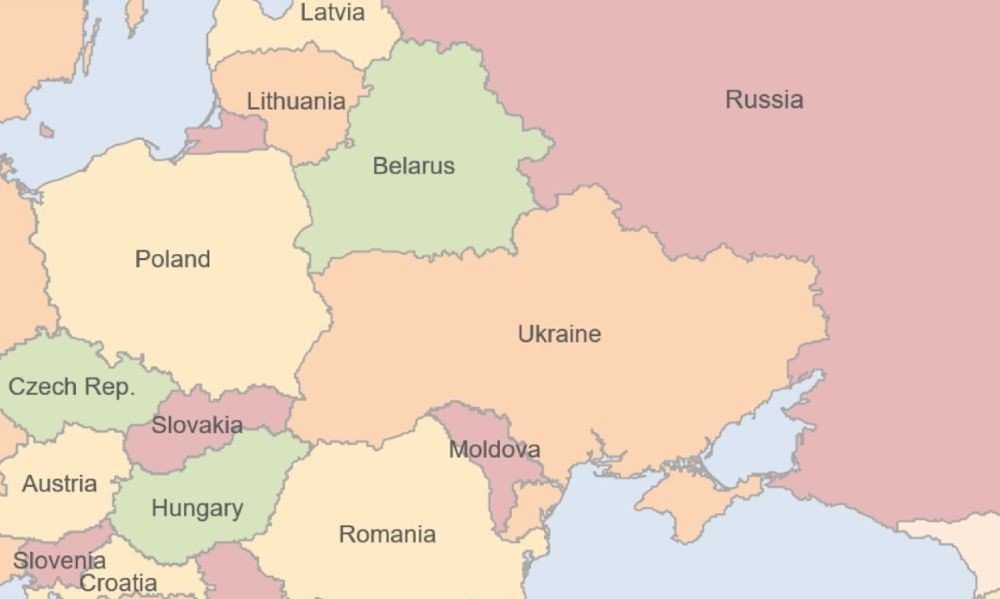
Atop the Mast: the flag of Hungary
On the Yardarm: the flags of Romania and Poland
If President Trump pressures Ukraine into ceding territory to Russia, the concession will reverberate widely in Eastern Europe and beyond. Six other nations share a border with Ukraine, and four of them are members of both the European Union and NATO: Hungary, Poland, Romania and Slovakia. In all four, democratic institutions are under stress; the threat of an approaching Russian bear could unsettle them further.
They share a strategic geographical position at the crossroads of Western Europe, the Balkans and the East. They all lived under the Soviet Union’s domination and were on the eastern side of the Iron Curtain during the Cold War. In 1956, the Soviet Army brutally crushed an uprising in Hungary.
When the Soviet Union collapsed in 1990, these nations rejoiced, conducted democratic elections, and worked hard to be invited into the EU and NATO. EU funds helped them modernize infrastructure, invest in digitization, and support the green transition.
But Hungary’s authoritarian President Viktor Orban has worked hard to build relations with Putin and Russia, preferring realpolitik to united EU opposition Russia’s invasion of Ukraine. Orban also has undermined democracy, the judiciary and the media.
Although nominally a social democrat, Slovakia’s Prime Minister Robert Fico has followed a playbook similar to Orban’s. Fico has cozied up to Russia by ending aid to Ukraine and by visiting Moscow last December, sparking widespread protests. Meanwhile, his government has moved to shut down immigration and take greater control of the media.
In Poland too, the Law and Justice Party has weakened democratic institutions and the rule of law. The party prevailed in its recent presidential election, electing a nationalist supporter of Trump’s MAGA movement.
Only in Romania have liberals prevailed. A right-wing candidate led the first round of voting in the 2024 presidential election, but those results were annulled because of Russian interference, and a more liberal candidate won the follow-up race.
Americans in 2025 have a lot in common with these nations. Russian disinformation is today a major challenge for all Western nations; it clearly played a role in the U.S. 2024 election. Threats to judicial and media independence, systemic corruption, infringement of civil rights (especially of immigrants)—in the U.S. and Eastern Europe, recent events underscore the need for continuous vigilance and reforms to strengthen democratic institutions and prevent further backsliding. Especially so if Russia’s influence and troops continue to creep toward the west.
Discover more from Post Alley
Subscribe to get the latest posts sent to your email.
